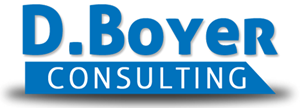Business is mostly conducted via email or phone communications.
Office hours 10:00 a.m. to 6:00 p.m, Mon. - Thurs., and 10:00 a.m. to 2:00 p.m. on Fridays.
SEND EMAIL INQUIRIES DIRECTLY TO:
Dawn.Boyer@me.com
Business is mostly conducted via email or phone communications.
Office hours 10:00 a.m. to 6:00 p.m, Mon. - Thurs., and 10:00 a.m. to 2:00 p.m. on Fridays.
SEND EMAIL INQUIRIES DIRECTLY TO:
Dawn.Boyer@me.com
Business is mostly conducted via email or phone communications.
Office hours 10:00 a.m. to 6:00 p.m, Mon. - Thurs., and 10:00 a.m. to 2:00 p.m. on Fridays.
SEND EMAIL INQUIRIES DIRECTLY TO:
Dawn.Boyer@me.com
What’s your daily email routine?
December 10th, 2012 by Dawn Boyer
What’s your daily email routine?
When I sit at the computer in my home office each morning, I have a routine to help me focus and stay on track for accomplishing work-related communications without getting distracted in unproductive sidebars. Time management specialists recommend a ‘touch it once’ policy for getting more done and avoid wasting time (picking up an actionable item multiple times). There are multiple theories in what order to take action (related to daily chores), and some may say priority tasks must come first.
This order of action for email takes into account a main folder may show all the emails in one listing. When clicking on the folders, I see only emails assigned to the folders by filtering rules. Getting rid of the ‘garbage’ allows one to concentrate on the real communications and human-sent emails in the main folder. Here’s my routine:
Open the ‘spam’ folder and review for any ‘accidental’ machine-made decision messages. Once a glance assures me nothing of import, I delete ‘all’ or move to the ‘trash.’ Open the ‘junk-mail’ folder. Go through the same actions as for spam, including the purge. If I see unsubscribe instructions for messages in the spam or junk-mail, I take the time. Yes, it does work (until they find the email address on another email list).
Next is checking 2nd level importance email folders. I open these next, because I can take action and achieve productive goals in seconds. These are usually short, and an instant decision. I take action and this folder’s action requirements are completed.
At this point the garbage is gone. I can more easily find the important email messages for action. Next I concentrate on the potential bread-and-butter income messages.
Business email is my fourth action. I open it next because there may be more time involved in accomplishing the actions requested, communications typed back to the sender, or opening up websites to post information from the email. To only ‘touch-it-once’ I have to have the time-block planned to follow-up (calls, return emails, physical action items).
I save the personal email for last at the end of the day. Based on the message content, I determine where to ‘share’ on social media platforms. Within the last year, I’ve noticed a decline for group emails from friends with jokes, political statements, and other messages. Jokes, personal philosophy messages, and political statements have broader impact when posted on social media. The group emails are migrating to social platforms for mass communications with greater impact.
I use Facebook for funny jokes, messages and fascinating pictures on a personal level to friends and family. LinkedIn is for business-related stories, messages, B2B marketing, and advertising messages. Twitter is linked to my Facebook business pages and LinkedIn status on the home page.
Using the ‘touch-it-once’ rule will increase productivity for email messages and work-related actionable items. What is important is concentrating on the filtered mail folders in the right order to eliminate the distractors and delete the garbage, so you’ll have a streamlined list upon which to completed tasks.
Readers Comments
What’s your daily email routine?
December 10th, 2012 by Dawn Boyer
What’s your daily email routine?
When I sit at the computer in my home office each morning, I have a routine to help me focus and stay on track for accomplishing work-related communications without getting distracted in unproductive sidebars. Time management specialists recommend a ‘touch it once’ policy for getting more done and avoid wasting time (picking up an actionable item multiple times). There are multiple theories in what order to take action (related to daily chores), and some may say priority tasks must come first.
This order of action for email takes into account a main folder may show all the emails in one listing. When clicking on the folders, I see only emails assigned to the folders by filtering rules. Getting rid of the ‘garbage’ allows one to concentrate on the real communications and human-sent emails in the main folder. Here’s my routine:
Open the ‘spam’ folder and review for any ‘accidental’ machine-made decision messages. Once a glance assures me nothing of import, I delete ‘all’ or move to the ‘trash.’ Open the ‘junk-mail’ folder. Go through the same actions as for spam, including the purge. If I see unsubscribe instructions for messages in the spam or junk-mail, I take the time. Yes, it does work (until they find the email address on another email list).
Next is checking 2nd level importance email folders. I open these next, because I can take action and achieve productive goals in seconds. These are usually short, and an instant decision. I take action and this folder’s action requirements are completed.
At this point the garbage is gone. I can more easily find the important email messages for action. Next I concentrate on the potential bread-and-butter income messages.
Business email is my fourth action. I open it next because there may be more time involved in accomplishing the actions requested, communications typed back to the sender, or opening up websites to post information from the email. To only ‘touch-it-once’ I have to have the time-block planned to follow-up (calls, return emails, physical action items).
I save the personal email for last at the end of the day. Based on the message content, I determine where to ‘share’ on social media platforms. Within the last year, I’ve noticed a decline for group emails from friends with jokes, political statements, and other messages. Jokes, personal philosophy messages, and political statements have broader impact when posted on social media. The group emails are migrating to social platforms for mass communications with greater impact.
I use Facebook for funny jokes, messages and fascinating pictures on a personal level to friends and family. LinkedIn is for business-related stories, messages, B2B marketing, and advertising messages. Twitter is linked to my Facebook business pages and LinkedIn status on the home page.
Using the ‘touch-it-once’ rule will increase productivity for email messages and work-related actionable items. What is important is concentrating on the filtered mail folders in the right order to eliminate the distractors and delete the garbage, so you’ll have a streamlined list upon which to completed tasks.













